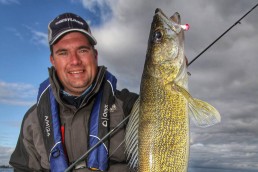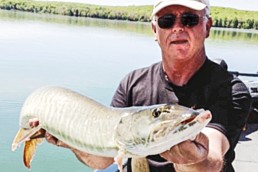Playing the Skin Game
SHARE THIS POST
Skin cancer is now the most common malignancy in the United States. And in a few months many more articles will be written about exposure to the sun and the need for sunscreen. The truth is, the winter rays, especially when reflected off of snow cover, can be just as damaging to skin as the summer sun. It’s advisable to always carry a good, fresh sunscreen in the car, the boat, in the tackle box or in your pocket year ‘round that’s ready to be applied.
Many individuals with dark moles may see ones less than 1/4 inch in diameter, concentric and that haven’t changed over the past several years. Outdoors enthusiasts with these consider themselves to be safe from skin cancer.
They are wrong.
The larger, often weeping or odd-shaped moles common in melanoma carcinomas represent the most deadly, but this form of skin cancer is not the only one. There are basal cell carcinoma and squamous cell carcinoma. While melanoma is the most serious and tends to metastasize quickly, neither basal cell nor squamous cell should be ignored. Unfortunately, almost nowhere will there be warnings about or descriptions of these two lesser, serious forms of skin cancer.
Basal cell carcinoma is most likely to appear on the forehead and scalp or on the forearms as small bumps—like a rash with or without discoloration, or, as a frequent scaling (almost like skin dandruff) or as a crusty, overlay of the skin.
The squamous cell carcinoma is harder to describe, and takes a number of forms. It can look like a small skin eruption that comes to a head, drains, and seems to disappear except for a core. It will fill, drain and appear to go away time after time. Most often it is not more than 1/2 inch across and seems to just be an irritation. Unlike the melanoma, which grows fast, the size of this type of carcinoma will not increase over several weeks or even months, so many ignore it believing it to be a pimple.
It can also develop like a small bump under the skin that can either be stable or moved slightly. These bumps are usually on the face and neck. They will seldom have any discoloration and are so small and inconsequential that they are noticed by men when shaving and by women when applying their makeup. The bump can be either soft or hard, and although it doesn’t seem to grow, it doesn’t go away.
Are you enjoying this post?
You can be among the first to get the latest info on where to go, what to use and how to use it!
These carcinomas can also appear as a recurring rash, usually limited to spots of 1 inch or less. They seem to come from nowhere as a bright red itch, and when scratched, the top layer of skin peels away and is accompanied with slight watery weeping, but seldom any bleeding. They appear to heal over a couple of weeks and may leave a slight brownish discoloration of the skin that otherwise seems normal. Most people with this last form of carcinoma will have a spot or two on their legs or arms most of the time, but few notice or think it’s serious.
Any unusual skin problem, even small, needs to be examined by a doctor if the condition persists. These are seldom fatal cancers, but they are serious and do need to be further diagnosed and or treated. Basal and squamous cell carcinomas become more of a problem after the age of 50 and can appear in both men and women who spend a lot of time in the sun in any season.
Treatment
Depending on the type, size, location and age, a dermatologist or other doctor can successfully remove them. If seen early in what is referred to as the “pre-cancer stage,” they can be scraped or chemically removed. Some long-existing growths, especially on the face, can be removed using Mohs micrographic surgery (MMS). This surgery is done under local anesthesia and may or may not require any plastic surgery, depending on the size and location of the carcinoma. Others caught very early can be burned or frozen off. Larger concentrations of spots or rashes can be removed using a cream over a period of weeks. Consult your doctor first before deciding which method or treatment should be used if needed.
Many of us live in the sun, tanned from our gardening, boating, fishing and ice fishing without a problem. Many think: “I don’t need sunscreen; I tan easily and naturally and never burn.” This is irrelevant, as the sun can still damage the skin for those who tan easily. All need some sunscreen with an adequate SPF level, even those who are naturally darker with better levels of melamin and higher amounts of eumelanin in the skin.
There are also special outdoor shirts made of sun-resistant fabric. Rit makes a rinse that can be used on any washable fabric to make it UV-resistant for several washings, and works on flannel, cotton and denims. It works on polyester fabrics too, but will wash out sooner. Remember to wear hats for shade and don’t forget polarized or UV sunglasses to protect the eyes, as cataracts and their development is attributed to prolonged UV exposure in the sun.
Tomorrow, when you get in the car and head out for your special ice fishing hole, stop at the store, get some sunscreen and go catch a bunch.
MWO
SHARE THIS POST
Did you enjoy this post?
You can be among the first to get the latest info on where to go, what to use and how to use it!
Bess Pierce
Before Dick and Bess Pierce married, they fished. When he was laid off, they set 1000-hook jump lines, daily, to pay bills. They’ve fished rivers and the Great Lakes with children and grandchildren. From a lifetime of experiences, Bess Pierce writes basic how-tos, where-tos and the joy of the Midwest, with an emphasis on outdoor experiences for families. She may be contacted at gemini2624@aol.com.


